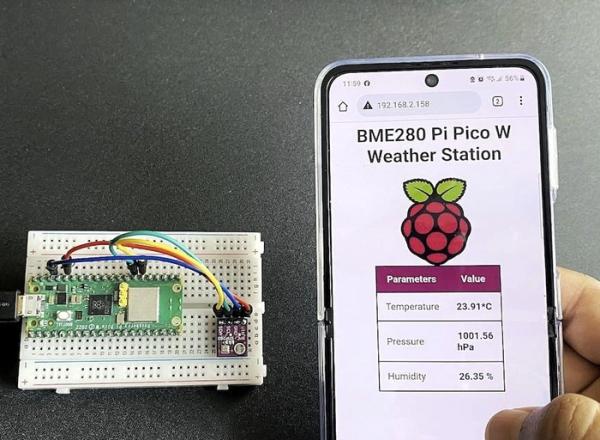If you have ever fancy the building your very own electronic weather station you might be interested in a new project published to the Hackster.io website by DIY Projects Lab. The Raspberry Pi weather station uses a tiny Pico W main board has the main processor and connects to a web server to display data. Weather metrics are collected using a DFRobot Gravity I2C BME280 Environmental Sensor.
The sensor integrates onboard temperature sensor, humidity sensor and barometer offering high precision and multiple functions for you to use. The Gravity I2C BME280 Environmental Sensor is based on BoSCH newest MEMS sensor (Micro-Electro-Mechanical System). The offset temperature coefficient is ±1.5 Pa/K, equiv. to ±12.6 cm at 1 °C temperature change. Therefore, the stable and multi-function make BME280 become a good choice for many projects.
Raspberry Pi Weather Station
“Ever had plans ruined by rainfall or thunderstorms and or been surprised by an unexpectedly sunny day? Want to measure temperatures, and humidity levels precisely, ? Then build your own weather station to get more reliable data and control! This exciting project uses Raspberry Pi Pico Was the hub device that connects readily to the existing network & creates a Web Server. When any connected device accesses this web server, Raspberry Pi Pico W reads the temperature, humidity, barometric pressure & altitude from BME280 & sends them to the web browser of that device with a snazzy interface. Excited much? Let’s get started!”
“Did you ever see a remote monitoring system where an HMI-based system displays remote sensor values? Did you ever try to make a web server that can control or display the values of different sensors on your local server? If yes, then this tutorial is a step in the right direction for you. In this tutorial, we will learn the example of interfacing BME280 with Pico W and how to display temperature, relative humidity, and pressure readings on a web server.”
For full instructions on how to build your very own Raspberry Pi Weather Station jump over to the official project page by following the link below.
Source: Raspberry Pi Weather Station using I2C BME280 Environmental Sensor


